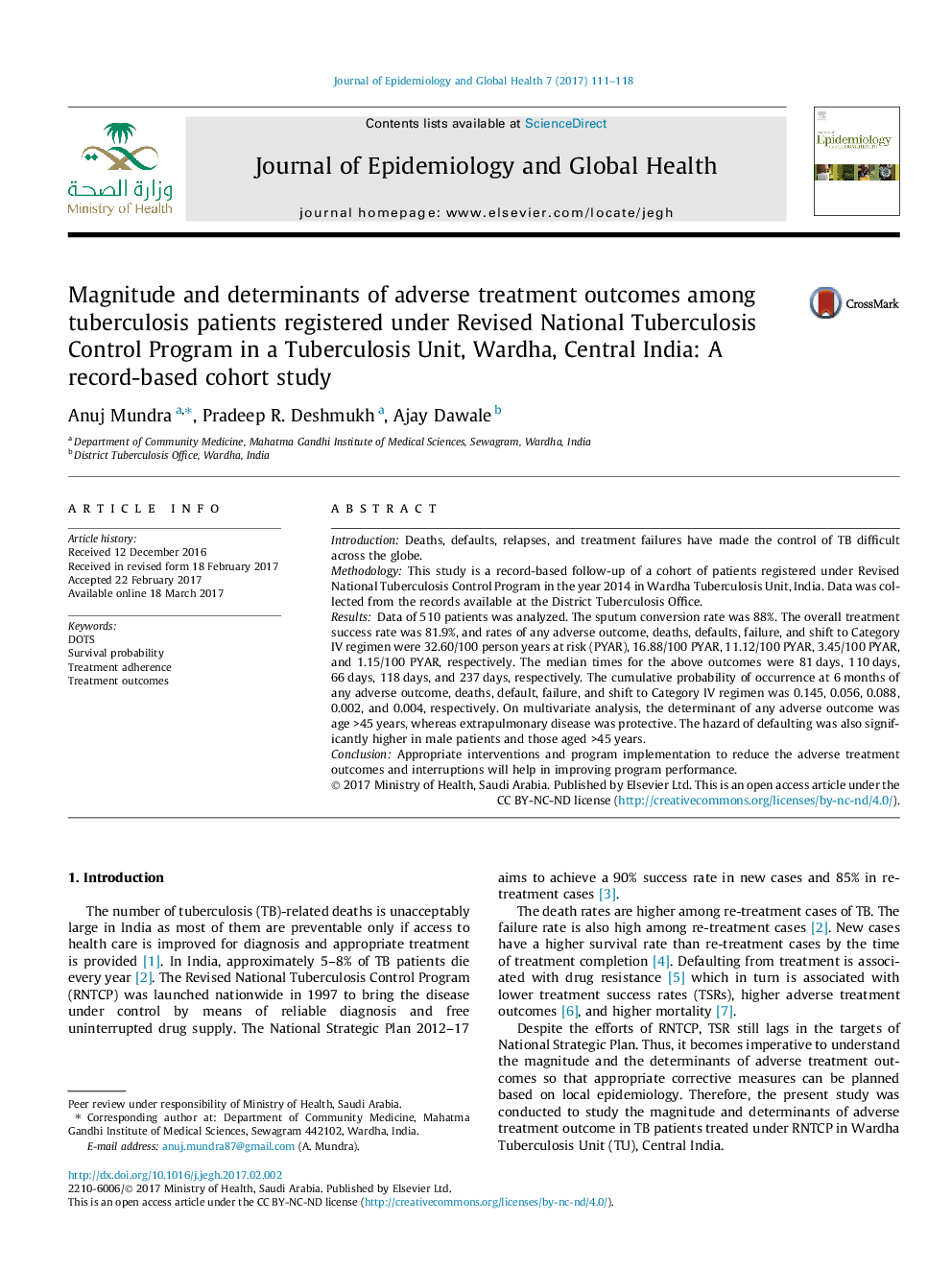| Article ID | Journal | Published Year | Pages | File Type |
|---|---|---|---|---|
| 5662960 | Journal of Epidemiology and Global Health | 2017 | 8 Pages |
IntroductionDeaths, defaults, relapses, and treatment failures have made the control of TB difficult across the globe.MethodologyThis study is a record-based follow-up of a cohort of patients registered under Revised National Tuberculosis Control Program in the year 2014 in Wardha Tuberculosis Unit, India. Data was collected from the records available at the District Tuberculosis Office.ResultsData of 510 patients was analyzed. The sputum conversion rate was 88%. The overall treatment success rate was 81.9%, and rates of any adverse outcome, deaths, defaults, failure, and shift to Category IV regimen were 32.60/100 person years at risk (PYAR), 16.88/100 PYAR, 11.12/100 PYAR, 3.45/100 PYAR, and 1.15/100 PYAR, respectively. The median times for the above outcomes were 81Â days, 110Â days, 66Â days, 118Â days, and 237Â days, respectively. The cumulative probability of occurrence at 6Â months of any adverse outcome, deaths, default, failure, and shift to Category IV regimen was 0.145, 0.056, 0.088, 0.002, and 0.004, respectively. On multivariate analysis, the determinant of any adverse outcome was age >45Â years, whereas extrapulmonary disease was protective. The hazard of defaulting was also significantly higher in male patients and those aged >45Â years.ConclusionAppropriate interventions and program implementation to reduce the adverse treatment outcomes and interruptions will help in improving program performance.
